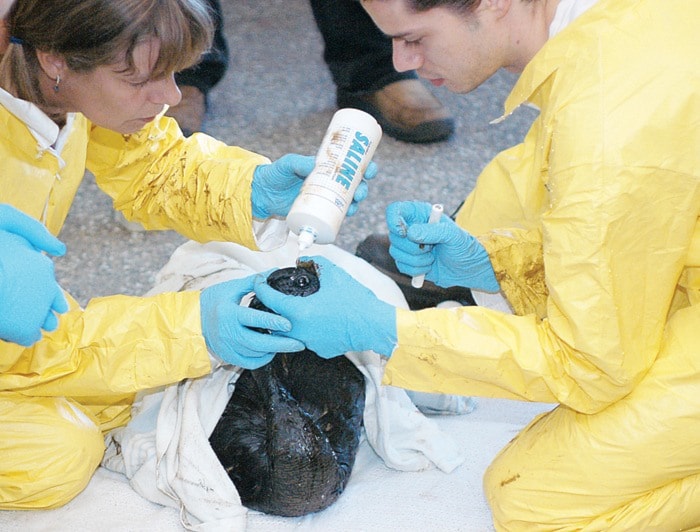While there has been much news coverage and public opposition regarding the Enbridge pipeline in northern B.C., the proposed Kinder Morgan pipeline from Alberta to B.C. through Coquitlam into Burnaby has so far garnered less attention. Nonetheless, I am just as concerned about the proposed “twinning” of this 1m156 km pipeline as the new one requested across northern B.C.
First, does the increased extraction of oil from the tar sands make any sense, especially if it is simply to be sold for private profit in other countries?
Without a doubt, we are well on the way towards a warmer world and all the ill effects that will bring to us and future generations. These include more extreme weather events such as droughts, floods, forest fires and acidification of the oceans which could so fundamentally alter sea ecology that our northern waters may no longer support salmon.
To propose pumping increasing amounts of carbon dioxide into the atmosphere for private profit is short-sighted, selfish and stupid. We need to find ways to reduce greenhouse gas emissions. Governments at all levels should be doing whatever they can to support a transition to carbon-free or carbon-reduced fuels and improving public transit.
The original 24-inch Trans Mountain pipeline, now owned by Kinder Morgan, was built in 1953 to transport oil from Alberta for use in B.C. and Washington as well as for shipping to California. While this pipeline has carried mostly conventional crude oil to local refineries, in recent years it has also carried refined products used in the Lower Mainland as well as some diluted bitumen derived from the tar sands. Thus it could be argued, at least, that this pipeline has served local needs.
But despite being built to high standards, there have been nine pipeline leaks since 2002 with losses of 4,800 barrels of oil. The largest spill took place in Burnaby in 2007 when an excavator punctured the line due to inaccurate information and a failure to follow National Energy Board regulations. Slightly smaller spills occurred in Sumas in 2005 and at the Burnaby terminal in 2009.
Kinder Morgan is proposing to “twin” this pipeline with a new 36-inch pipeline that will increase capacity over threefold. It expects new contracts will result in an initial 2.5-fold increase in the movement of material through these pipelines.
What is especially worrisome is the apparent plan for this increased capacity to be for mainly the movement of diluted bitumen derived from the tar sands. Unlike conventional crude oil from traditional oil wells, this bitumen is so viscous, it must be diluted to move it through a pipeline. The chemicals used for dilution include a number of volatile carcinogens such as benzene, toluene and xylene as well as toxic heavy metals. If a pipeline carrying diluted bitumen ruptured in Coquitlam, you could expect whole neighbourhoods to be evacuated to avoid exposure to these harmful chemicals.
Because diluted bitumen is so thick, it requires high pressure as well as temperatures of 60 C to move it through pipelines. It also contains sand from the tar sands, so it is highly abrasive on the internal surface of the pipeline.
Other components of diluted bitumen make it even more corrosive. In fact, diluted bitumen is up to 20 times more acidic, up to 70 times thicker and with a five to 10 times higher sulphur content than conventional crude oil. It is really nasty stuff. Despite the highly corrosive nature of diluted bitumen, the National Energy Board does not distinguish between conventional crude and diluted bitumen when setting minimum standards for pipeline construction.
Experience with the Kalamazoo spill in Michigan suggests spills of diluted bitumen are much more difficult and expensive to clean up than those of conventional crude. Certainly, it is not the type of material most people would want to be forced at high pressures through pipelines anywhere close to their home.
Kinder Morgan will require a right-of-way of up to 30 m wide. Expectations are the new pipeline will mostly, but not entirely, follow the route of the old one. Once the National Energy Board approves the corridor for the new pipeline, Kinder Morgan would apparently have the right to expropriate land for construction.
In urban areas, the subsurface beneath our roads is already crowded with conduits carrying many critical services, including drinking water, sewage, communication lines, natural gas and, in some cases, electricity. Is it safe to add a large pipeline carrying corrosive and hazardous chemicals to this mix?
Recent reports indicate the southern coast of B.C. is at significantly greater risk for a major earthquake than previously thought. Do we really want this new pipeline of diluted bitumen threading through our neighbourhoods and school yards?
In addition to construction and safety issues, there are also concerns that new contracts with foreign companies for shipment of diluted bitumen may result, through competition, in higher local prices for gas and a tightening supply.
All told, it is hard to see anything but potential problems from this proposed new pipeline.
And that’s even without considering the impacts on increased tanker traffic in Burrard Inlet, the subject of the next Green Scene on Aug. 24.
Elaine Golds is a Port Moody environmentalist who is vice-president of Burke Mountain Naturalists, chair of the Colony Farm Park Association and past president of the PoMo Ecological Society.
